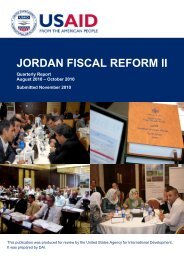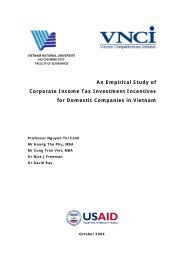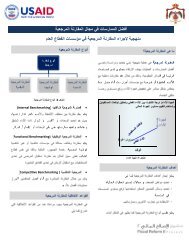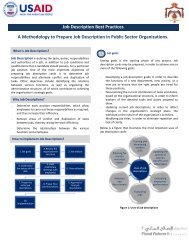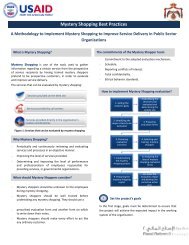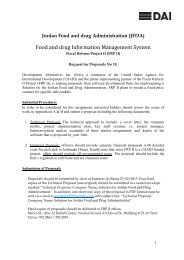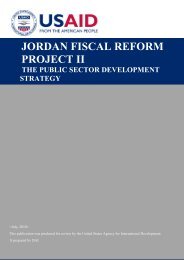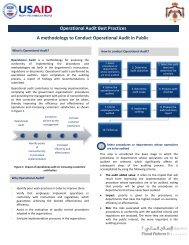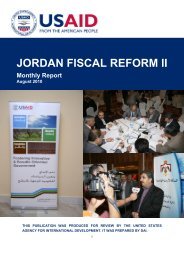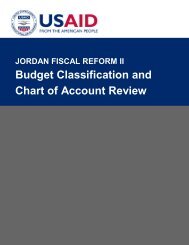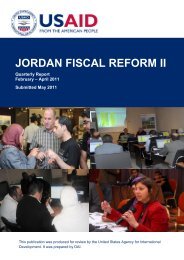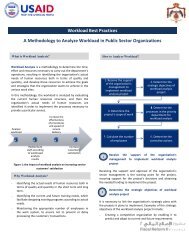Integrated Financial Management Information Systems: A ... - Frp2.org
Integrated Financial Management Information Systems: A ... - Frp2.org
Integrated Financial Management Information Systems: A ... - Frp2.org
You also want an ePaper? Increase the reach of your titles
YUMPU automatically turns print PDFs into web optimized ePapers that Google loves.
PART 1: UNDERSTANDING IFMIS<br />
IFMIS: WHAT IT IS<br />
A financial management information system, or integrated financial management information system<br />
(IFMIS), is an information system that tracks financial events and summarizes financial information.<br />
In its basic form, an IFMIS is little more than an accounting system configured to operate according<br />
to the needs and specifications of the environment in which it is installed.<br />
Generally, the term “IFMIS” refers to the use of information and communications technology in<br />
financial operations to support management and budget decisions, fiduciary responsibilities, and the<br />
preparation of financial reports and statements. In the government realm, IFMIS refers more<br />
specifically to the computerization of public financial management (PFM) processes, from budget<br />
preparation and execution to accounting and reporting, with the help of an integrated system for<br />
financial management of line ministries, spending agencies and other public sector operations.<br />
The principal element that “integrates” an IFMIS is a common, single, reliable platform database (or a<br />
series of interconnected databases) to and from which all data expressed in financial terms flow. 1<br />
Integration is the key to any successful IFMIS. In a nutshell, integration implies that the system has<br />
the following basic features:<br />
Standard data classification for recording financial events;<br />
Internal controls over data entry, transaction processing, and reporting; and<br />
Common processes for similar transactions and a system design that eliminates unnecessary<br />
duplication of data entry.<br />
Integration oftentimes applies only to the core financial management functions that an IFMIS<br />
supports, but in an ideal world it would also cover other information systems with which the core<br />
systems communicate, such as human resources, payroll, and revenue (tax and customs). At a<br />
minimum, the IFMIS should be designed to interface with these systems.<br />
IFMIS: WHAT IT DOES<br />
An IFMIS stores, organizes and makes access to financial information easy. It not only stores all the<br />
financial information relating to current and past years’ spending, but also stores the approved<br />
budgets for these years, details on inflows and outflows of funds, as well as complete inventories of<br />
financial assets (e.g., equipment, land and buildings) and liabilities (debt).<br />
The scale and scope of an IFMIS can vary, from simple General Ledger System to a comprehensive<br />
system addressing Budget, Revenue, Expenditure Control, Debt, Resource <strong>Management</strong>, Human<br />
Resources, Payroll, Accounting, <strong>Financial</strong> Reporting, and Auditing processes across central<br />
government or even including local government and other public sector and quasi-governmental<br />
agencies and operations.<br />
A more comprehensive, well integrated system will:<br />
Provide timely, accurate, and consistent data for management and budget decision-making;<br />
Support government-wide as well as agency-level policy decisions;<br />
1 Source: Transparency International Source Book 2000, cited in Casals and Associates (2004).<br />
2 INTEGRATED FINANCIAL MANAGEMENT INFORMATION SYSTEMS: A PRACTICAL GUIDE



